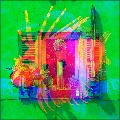|
SpaceRay
|
||||
| Posted: May 28, 2012 7:18 am | ||||
|
SpaceRay
|
||||
| Posted: May 28, 2012 7:20 am | ||||
|
SpaceRay
|
I have now made a Harris Shutter Effect google images search and found many interesting examples of what can be done with this filter and what is really this effect.
Also on this one here ---> Most Interesting Harris Shutter effect examples From this website--> How To Do the Harris Shutter Effect



 |
|||
| Posted: May 28, 2012 7:29 am | ||||
|
Morgantao
|
I released this one as a snippet because:
A) It's terribly simple B) There's no way to show what it does in the filter page C) It comes with no presets. The website SpaceRay post above has some nice samples. Thanks, SpaceRay |
|||
| Posted: May 28, 2012 10:48 am | ||||
|
Skybase
|
I'm going to be really picky with the Harris Shutter filter here. The original process for the shutter involved a negative, therefore the print process was subtractive and not additive. Meaning RGB would be the "modernized" version of the Harris Shutter where traditionally it is a CMYK process.
|
|||
| Posted: May 28, 2012 10:54 am | ||||
|
Morgantao
|
Technically speaking, you're correct, since everything we see around us except TV's and monitors work in CMYK... All the photos in your family album are CMYK. Also, it's interesting to know that modern digital photo develop machines actually work by shining 4 lights (Red, Green, Blue, and IR) through a negative, to a scanner. The scanner then tells a special laser device where to shine different color lasers onto the light sensitive paper, before it goes through the chemicals that develop it to a photo we can see. The origins of this technique are from the early 1900's. A photographer back then didn't have color film, so to make a color photo, he had to do 3 exposures of the same subject, once with a Red filter (Gel) on the lens, once with a Green filter, and once with a Blue filter. Then the negatives would be used one after another in order to developped one single photo. Robert S. “Bob†Harris of Kodak invented a simpler way to make the 3 exposures, on a single shot, instead of three, by using a strip of 3 filters and 2 opaque blocks as a shutter. Hence the term Harris Shutter. Technical stuff aside, here are nice examples of early color photography by Sergey Prokudin-Gorsky (1863-1944): http://identicaleye.blogspot.com/2009...-1863.html |
|||
| Posted: May 28, 2012 11:42 am | ||||
Join Our Community!
Filter Forge has a thriving, vibrant, knowledgeable user community. Feel free to join us and have fun!
33,762 Registered Users
+5 new in 7 days!
153,621 Posts
+7 new in 7 days!
15,362 Topics
+66 new in year!
Online Users Last minute:
35 unregistered users.
Recent Forum Posts:
- Preview issue with animation by Rachel Duim
3 hours ago - Random Crashes using FF14 by PixelStar
December 16, 2025 - Filter Forge 15 Released by samedy
December 15, 2025 - Affinity 3: Use size of single Artboard by Raschid Abdul-Nour
December 13, 2025 - FFEasyRender 2.0 - GUI based batch renderer for Windows for FF 9.0 by Ruckage
December 2, 2025 - Suggest a new filter. by ivkis
December 1, 2025 - How to declare your love by Djekki by Gent
November 27, 2025 - Is this a Filter Forge or MacOS issue, anyone? by CFandM
November 27, 2025 - Adaptive Tiling by byRo by ivkis
November 26, 2025 - A small harbor with fishing boats in Turkey by Foxi77 by Texasgrammy
November 17, 2025 - Rough Wood Planks by emme by Erik Pedersen
November 12, 2025 - Affinity V3 by CFandM
November 7, 2025

